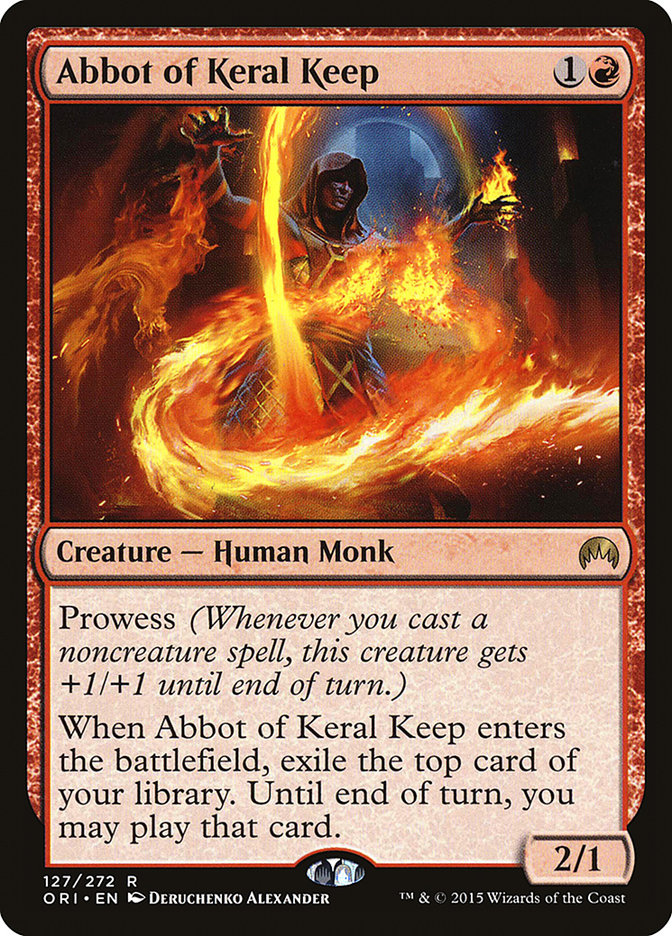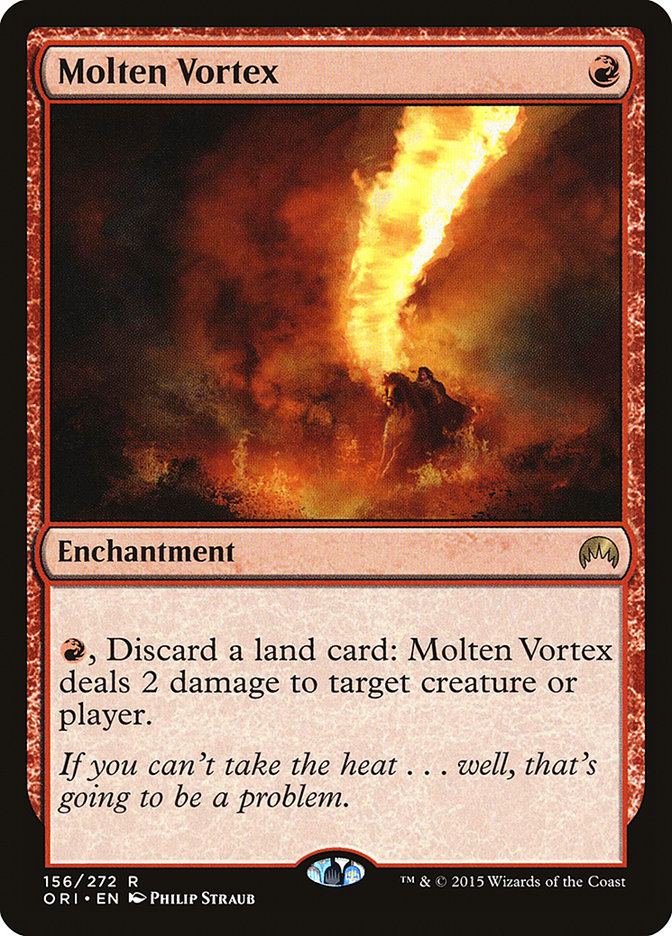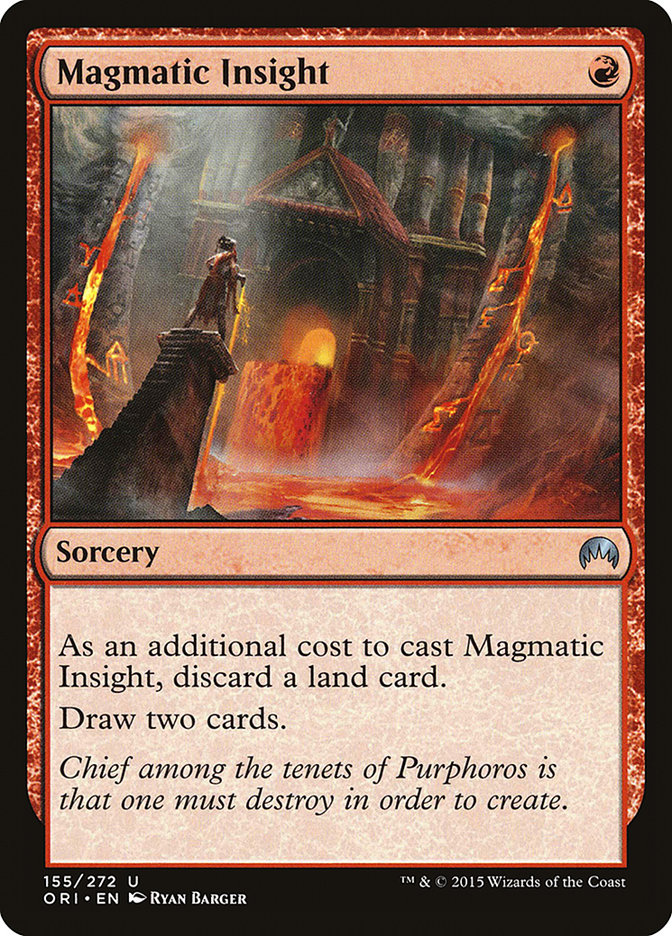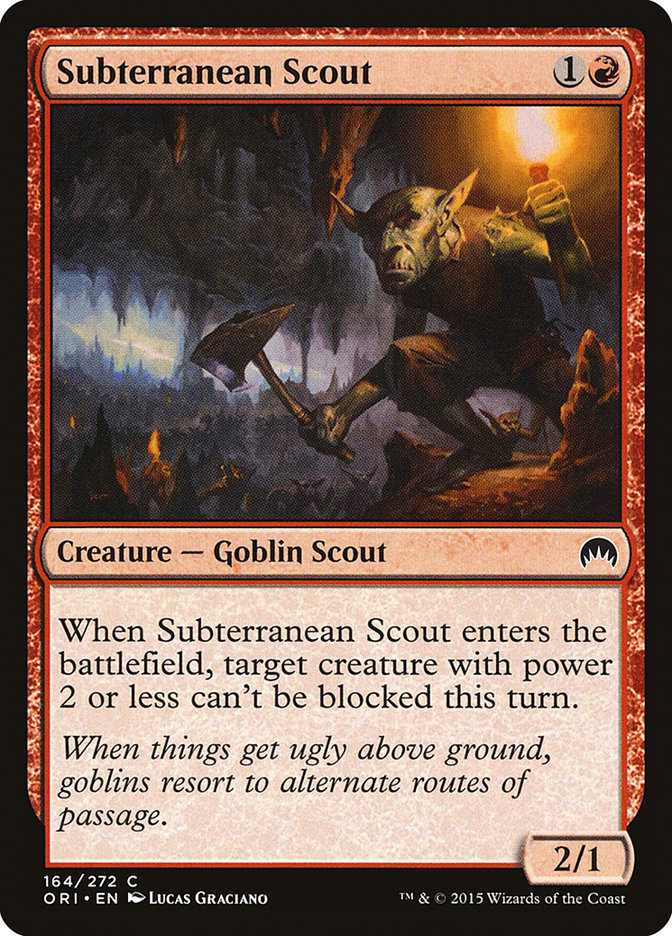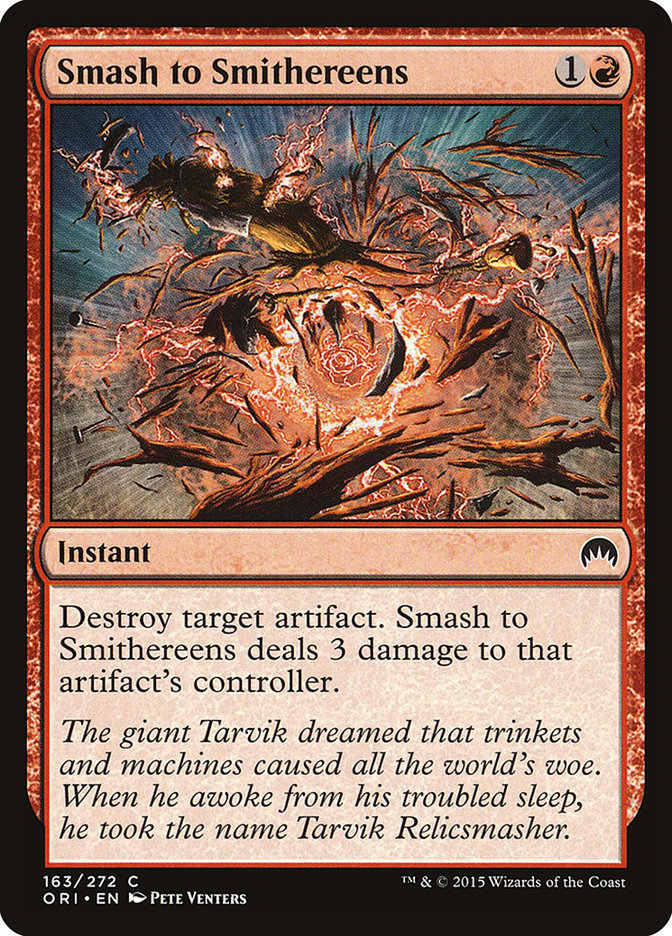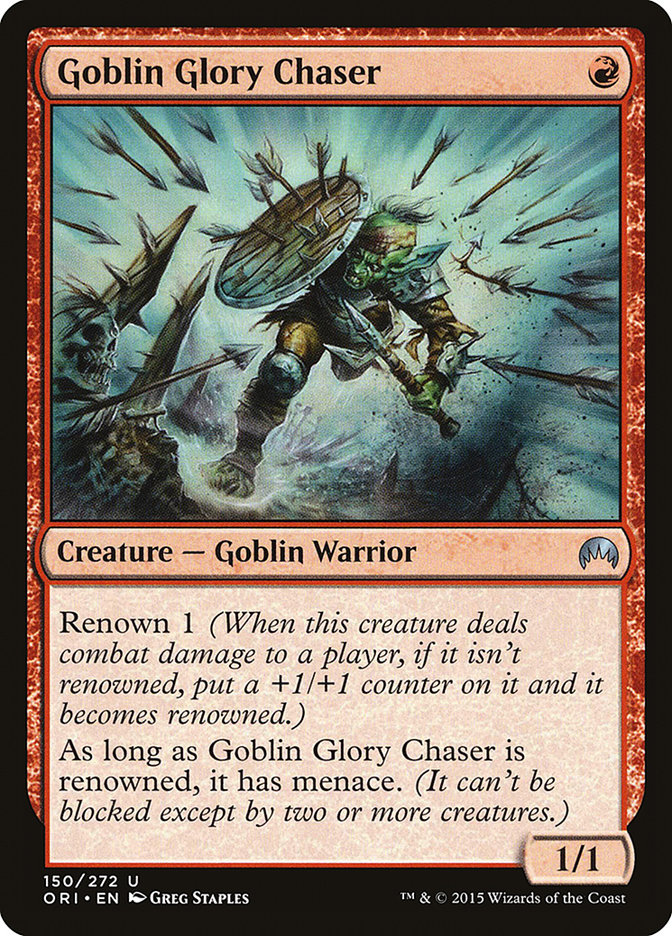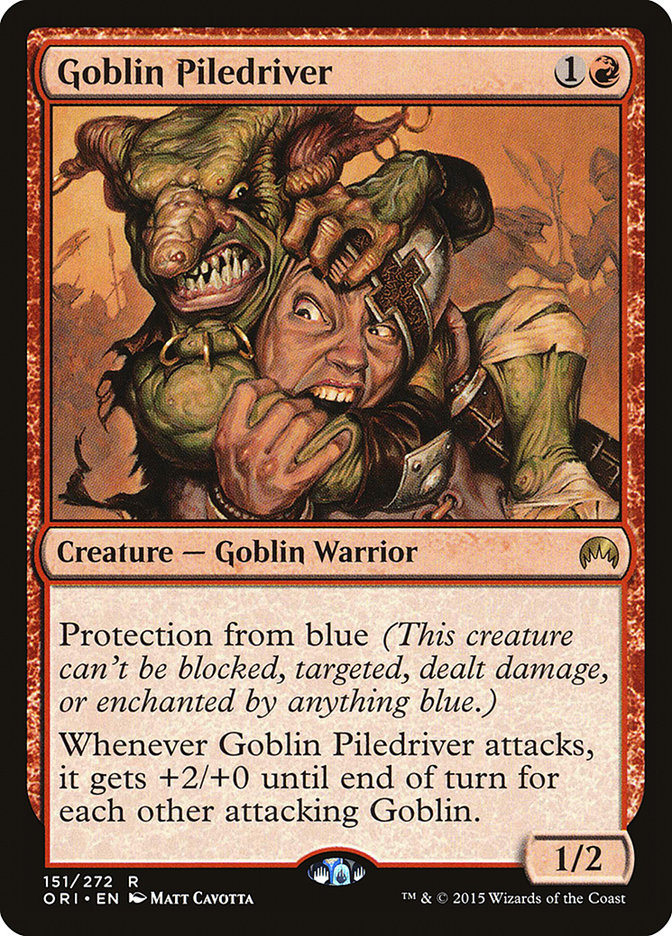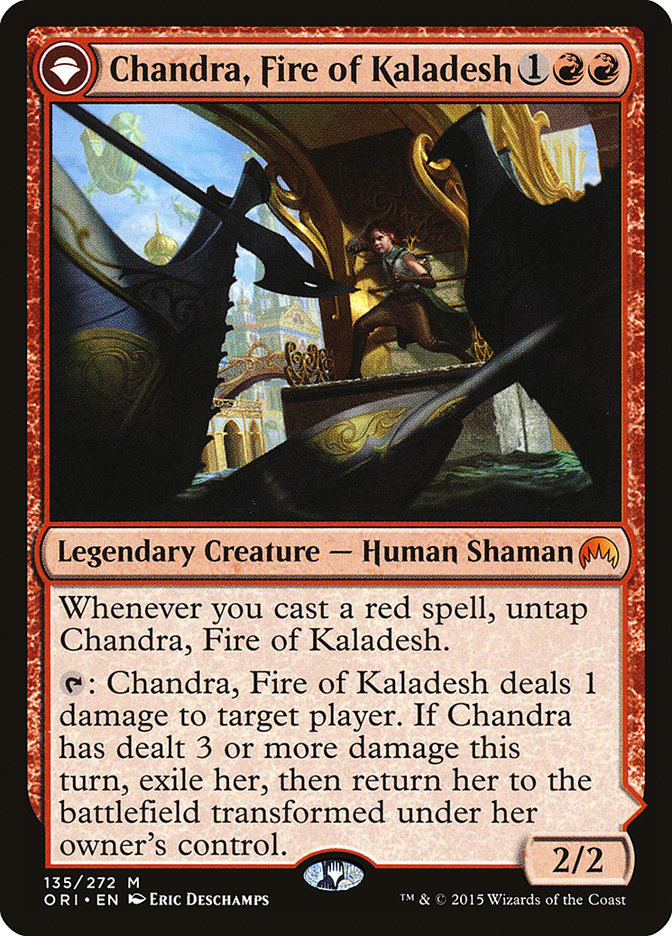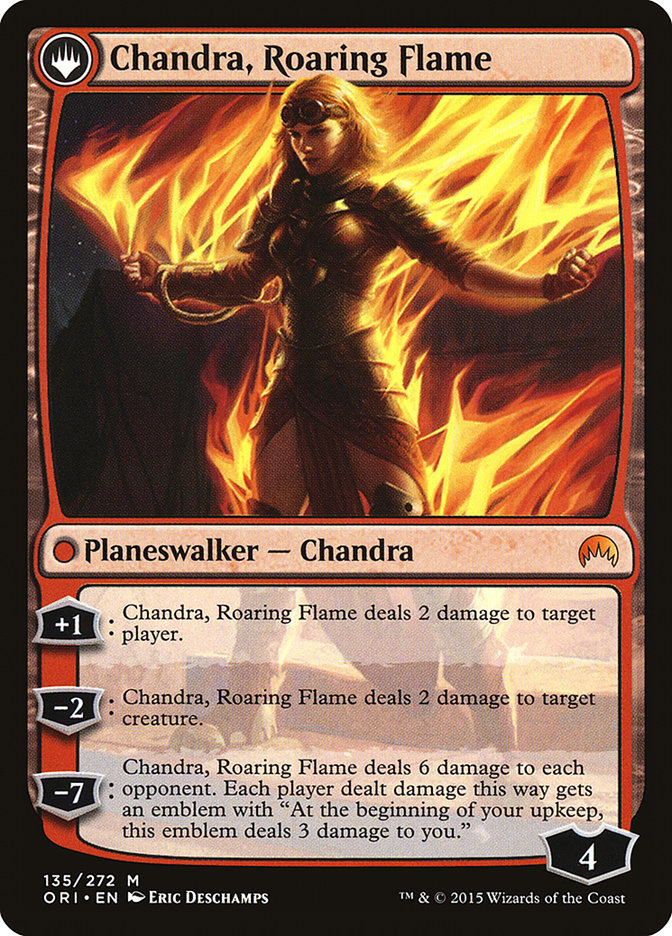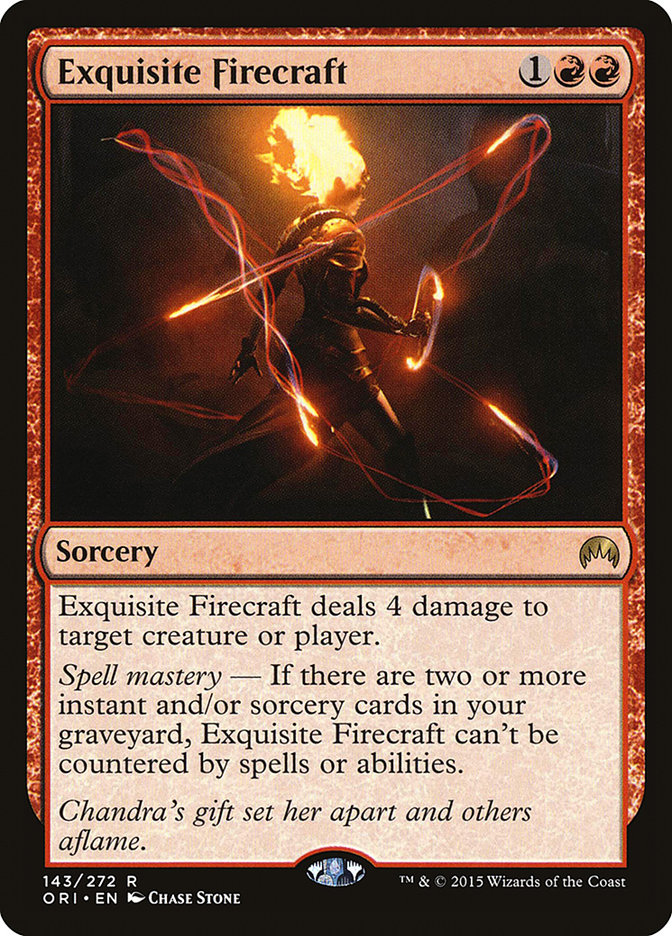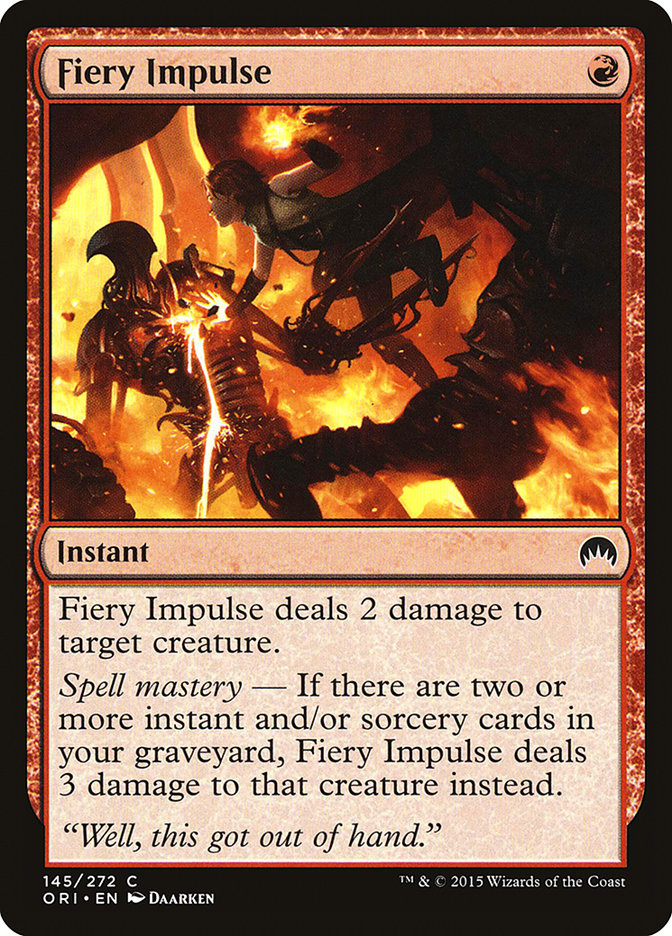Magic Origins looks to spawn new decks and update many others, including aggressive red-based strategies. The Open Series in Chicago this weekend marks the first tournament that will include the new set in Standard, and it will help set the benchmark for Pro Tour Magic Origins.
Today I’m looking at the cheap red cards from Magic Origins that have Constructed potential. While there are some good ones that cost 4 or more mana, I’ll be focusing on the ones that you can count on playing within an eighteen to twenty land deck.
Similar to Ire Shaman, I think the key to Abbot of Keral Keep is to not worry too much about getting extra value from him. Seeker of the Way would be good enough in a red deck without the lifegain, as seen in the R/W Aggro deck that Ben Stark played a few months ago.
With a hypothetical twenty lands, twenty one-drops and twenty non-one-drops, the rough math comes out to being 66% that you’ll hit something relevant to use on turn three. Of course if you hit a one-drop and don’t have a third Mountain things get fuzzy, and it’s not as useful if you do hit a Mountain but have enough lands already. Going off of feel alone, I’d guess you’ll get something useful about half the time on turn three.
I like how the card can give you some velocity in the late game. Rarely does Mono-Red have a chance at a straightforward two-for-one, which the Abbot will be in the late stages of the game. I can imagine how sweet it’ll be to chain Abbots into each other when a single topdeck wouldn’t do.
The new take on the Rancor series, which work by attempting to make creature enchantment Auras a tad more playable by replacing the Aura after the creature dies. One thing that’s different now from back when Rancor was a thing in Standard is the number of exile effects going around. Where Rancor triggered to return whenever it hit the graveyard, Infectious Bloodlust only triggers when the creature dies, which makes it a lot less likely to replace itself.
With that in mind, if I were to play an Aura in Standard right now, I’d first start with Hammerhand and play up to four of those before playing any copies of Infectious Bloodlust. Also, Call of the Full Moon will usually be better as well.
Not quite what Mono-Red is looking for. There are better ways to mitigate flooding, like Lightning Berserker, Dragon Mantle, or my personal favorite: ending the game before flooding out matters.
Not what Mono-Red wants for the same reasons as for Molten Vortex. It’s just a fluff spell to trigger Prowess, and that kind of low-pressure play only serves to give your opponent a much-needed moment of reprieve.
Serves a similar purpose as Eidolon of the Great Revel or Thunderbreak Regent in that it gets value from their removal spells. This one, however, requires you connecting on turn three with a 2/2, which is a tall order even in a deck built to do just that. And what if they’re a creature deck and you just so happened to get through? Now you’re left with a three-mana 3/3 with a low-impact ability.
I first thought that this card was close in power to Goblin Shortcutter and even better in some instances, like getting a Goblin Rabblemaster through. However, the way red decks featuring a swarm of small creatures plays out against many other decks is you having a bunch of little creatures while they have a single good blocker like a Courser of Kruphix or Deathmist Raptor trying to brick-wall your team. Even if Subterranean Scout could make any creature unblockable, not just one with two power or less, I’d still rank it as worse than Goblin Shortcutter. With that said, I didn’t even consider Goblin Shortcutter to be playable in Mono-Red.
One of the best red sideboard cards of all time. When there are artifacts in the format, this is basically a two-for-one. Even if Thopter tokens start becoming commonplace, I can see Smash to Smithereens being a very efficient sideboard option. For the first week of Standard, though, I don’t think it’s needed.
A decent-looking rate, but it really needs help getting up to Renown. This means playing a significant number of either unblockable effects or removal spells. A natural pairings seems to be this with Subterranean Scout, which I feel leads to a downward spiral of weak cards that serve to only further justify each other.
What this card really needs is for its Protection from Blue ability to be relevant. In the days of Boss Sligh, I wanted something that could fight through Master of Waves and the rest of Mono-Blue Devotion so much that for a while I splashed green for Skylasher. In current Standard, opposing blue creatures aren’t commonplace enough for a Protection from Blue creature to get a bunch of value.
This little Aura is better than it looks and it plays a similar role to Madcap Skills. The drawback isn’t as bad as it looks, and the downside will likely be turning Call of the Full Moon into a two-mana Lava Spike with some chance of repeating. It takes a little finesse not to trigger the card yourself, but you can usually find a window since you have a fair number of instants like Wild Slash in your deck to still be able to fully use your mana for the turn. Also, I like how the toughness boost can now bring your creature out of range of some removal spells like Bile Blight or Lightning Strike.
A 2/2 for three mana has to be reaaaaaally good to be playable in my style of red deck. Chandra has been publicly regarded as having too weak stats and taking too much work to get going, and I have to agree here. One underlying boon – and probably a common misconception – is that she only has to deal three damage total to anything in a single turn, not just to players. That means you can attack into something like a Sylvan Caryatid then cast a red spell. Also, something like a Coordinated Assault can both kill a creature in combat and flip Chandra.
I was never really a fan of Char. This has a more restrictive cost and is sorcery speed. Stoke the Flames is more flexible overall, and I don’t see Exquisite Firecraft taking its spot. When used together, there may be enough pieces for an actual burn deck that splashes into green for Atarka’s Command. I’m hesitant to believe that without players having a natural reason to hurt themselves with cards like shock lands or Phyrexian mana that burn can race the good creatures that exist now, like Courser of Kruphix and Siege Rhino. Also, the best burn spell in Stoke the Flames likes to have a healthy number of small creatures to help cast it, and traditionally Burn decks can only afford twelve or so slots to creatures.
A better sideboard card against small creatures than Magma Spray when the format doesn’t have many recurring creatures like Ashcloud Phoenix or Bloodsoaked Champion. Spell Mastery will come up every now and then to maybe hit a mid-game Fleecemane Lion after firing off a few burn spells.
Let’s look at a few builds of Mono-Red. First is what Goblins looked like at SCG Baltimore followed by how I think it will look like at SCG Chicago.
Spells (24)
- 4 Dragon Fodder
- 4 Lightning Strike
- 4 Titan's Strength
- 4 Stoke the Flames
- 4 Obelisk of Urd
- 4 Hordeling Outburst
Sideboard

Creatures (22)
- 4 Goblin Piledriver
- 3 Frenzied Goblin
- 4 Foundry Street Denizen
- 2 Goblin Rabblemaster
- 2 Goblin Heelcutter
- 3 Subterranean Scout
- 4 Goblin Glory Chaser
Lands (20)
- 20 Mountain
Spells (18)

Goblins swarms the board with cheap Goblins and Goblin tokens and pumps them up with Obelisk of Urd. With so many Goblins attacking, Goblin Rabblemaster and Goblin Piledriver get huge power boosts. With unblockable effects like Frenzied Goblin and Subterranean Scout to get them through, Goblins can function like a combo deck that otherwise looks and plays like a beatdown deck.
Goblins has a pretty high ceiling on its nut draws, but it can also get some embarrassing draws when it doesn’t come together. The question remains whether dedicating your red deck slots to synergistic Goblins is the way to go over playing better, non-Goblin creatures.
It will be really tough for Goblins to piece together enough synergy to push out the naturally strong red creatures like Monastery Swiftspear, Zurgo Bellstriker, Lightning Berserker, Firedrinker Satyr, and Eidolon of the Great Revel out of the sideboard. Abbot of Keral Keep is also competing against the tribe. My money is to stick with the individually-strong creatures. I’ve played a bit with the Abbot and have never had him feel bad, mediocre at worst and pretty good at best, meaning that it’s average is in a pretty tight and consistent range that is good for a Constructed card.
Creatures (21)
- 2 Frenzied Goblin
- 4 Foundry Street Denizen
- 4 Firedrinker Satyr
- 2 Goblin Rabblemaster
- 1 Goblin Heelcutter
- 2 Lightning Berserker
- 2 Zurgo Bellstriker
- 4 Abbot of Keral Keep
Lands (20)
- 20 Mountain
Spells (19)

Everything here is fairly normal with the addition of four Abbot of Keral Keep. They ought to be decent at all stages of the game, especially when in topdeck mode. Mono-Red is an excellent choice to punish the waves of untuned decks you can expect to face in the first week of a new set.
For the Open Series in Chicago this weekend, I’d stick with a standard red deck instead of moving into a Goblin theme. Nothing special or flashy is the key to victory here.
For those headed to Chicago, Mono-Red is still a great option.

